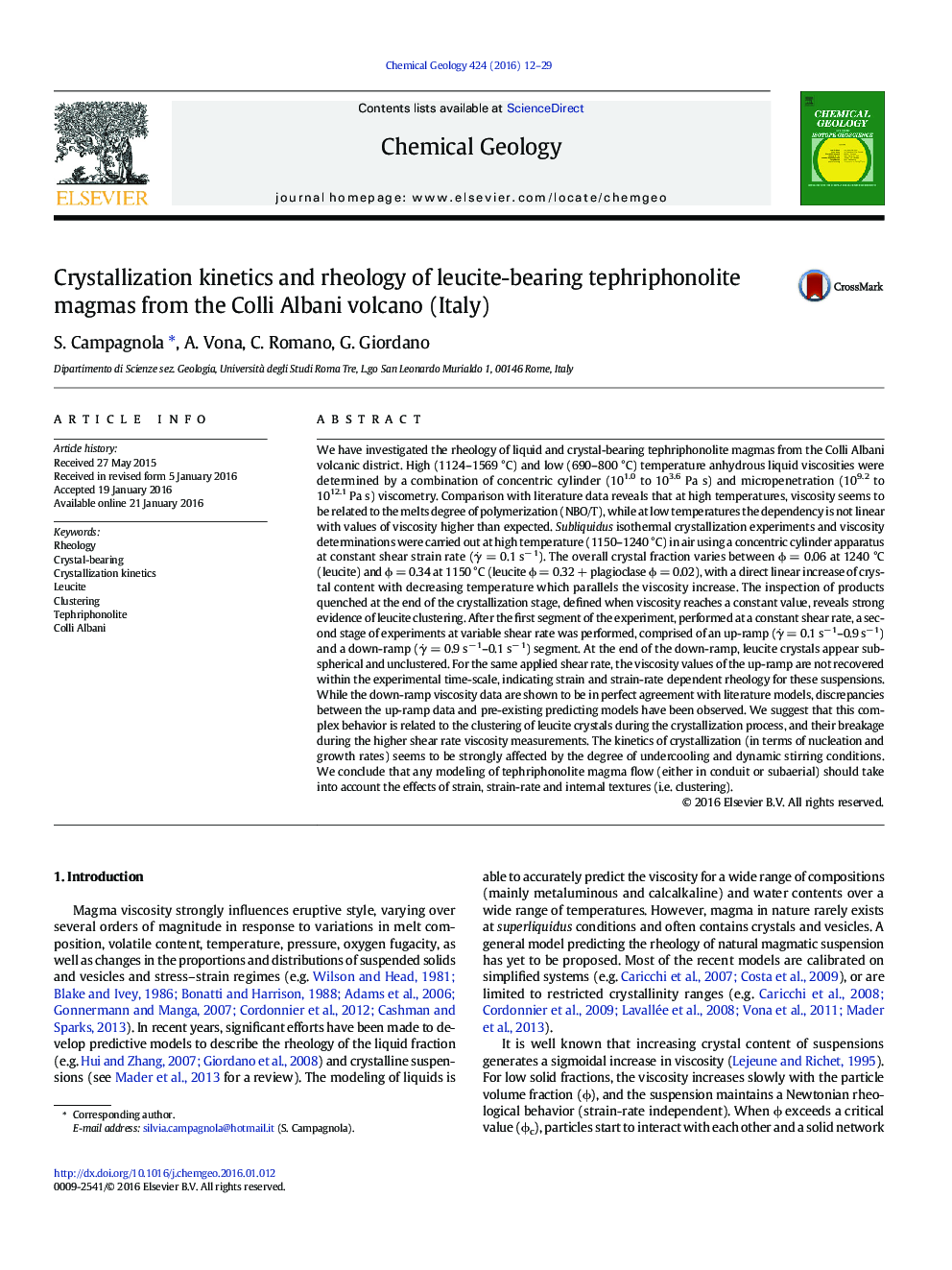| Article ID | Journal | Published Year | Pages | File Type |
|---|---|---|---|---|
| 4698385 | Chemical Geology | 2016 | 18 Pages |
•Viscosity experiments on liquid and crystal-bearing natural tephriphonolite from Colli Albani volcano were performed.•A strong increase in viscosity as a consequence of increasing crystal content has been observed.•Crystallization kinetics is enhanced by the degree of undercooling and dynamic stirring.•Strain and strain-rate dependent change of textural configuration is related to the disruption of leucite clusters.
We have investigated the rheology of liquid and crystal-bearing tephriphonolite magmas from the Colli Albani volcanic district. High (1124–1569 °C) and low (690–800 °C) temperature anhydrous liquid viscosities were determined by a combination of concentric cylinder (101.0 to 103.6 Pa s) and micropenetration (109.2 to 1012.1 Pa s) viscometry. Comparison with literature data reveals that at high temperatures, viscosity seems to be related to the melts degree of polymerization (NBO/T), while at low temperatures the dependency is not linear with values of viscosity higher than expected. Subliquidus isothermal crystallization experiments and viscosity determinations were carried out at high temperature (1150–1240 °C) in air using a concentric cylinder apparatus at constant shear strain rate (γ̇ = 0.1 s− 1). The overall crystal fraction varies between ϕ = 0.06 at 1240 °C (leucite) and ϕ = 0.34 at 1150 °C (leucite ϕ = 0.32 + plagioclase ϕ = 0.02), with a direct linear increase of crystal content with decreasing temperature which parallels the viscosity increase. The inspection of products quenched at the end of the crystallization stage, defined when viscosity reaches a constant value, reveals strong evidence of leucite clustering. After the first segment of the experiment, performed at a constant shear rate, a second stage of experiments at variable shear rate was performed, comprised of an up-ramp (γ̇ = 0.1 s− 1–0.9 s− 1) and a down-ramp (γ̇ = 0.9 s− 1–0.1 s− 1) segment. At the end of the down-ramp, leucite crystals appear sub-spherical and unclustered. For the same applied shear rate, the viscosity values of the up-ramp are not recovered within the experimental time-scale, indicating strain and strain-rate dependent rheology for these suspensions. While the down-ramp viscosity data are shown to be in perfect agreement with literature models, discrepancies between the up-ramp data and pre-existing predicting models have been observed. We suggest that this complex behavior is related to the clustering of leucite crystals during the crystallization process, and their breakage during the higher shear rate viscosity measurements. The kinetics of crystallization (in terms of nucleation and growth rates) seems to be strongly affected by the degree of undercooling and dynamic stirring conditions. We conclude that any modeling of tephriphonolite magma flow (either in conduit or subaerial) should take into account the effects of strain, strain-rate and internal textures (i.e. clustering).
